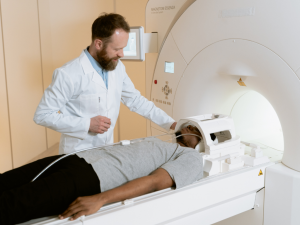Risk factors for and screenings to prevent lung cancer
Lung cancer is the third most common cancer in the U.S. and the leading cause of cancer deaths among men and women. Although lung cancer is different for everyone who experiences it, common symptoms include a lingering cough, coughing up blood and shortness of breath, among others. In recognition of Lung Cancer Awareness Month, everyone is encouraged to learn more about lung cancer risk factors and what they can do to protect themselves from the disease.
RISK FACTORS
Smoking poses the greatest risk in the development of lung cancer. Every time a person smokes, changes to their lung tissue occur almost immediately. Typically, our lungs are resilient enough to repair this damage, but each repeated exposure weakens their ability to do so. Continued smoking creates an accumulation of tar, patches of inflammation and larger than normal lungs, which could lead to cancer. However, these effects do not have to be permanent.
In a recent Wellness Talk episode, UF College of Public Health and Health Professions Clinical Assistant Professor Lindsey King, Ph.D., explained how a smoker’s lungs begin to clarify themselves after an individual quits smoking. In fact, 10 years after quitting, the risk of lung cancer is halved, and the risk of heart disease is that of a non-smoker.
Exposure to secondhand smoke, or breathing in the smoke exhaled by others while smoking, can also lead to the same deleterious effects. Secondhand smoke is most harmful for infants and children, whose organs cannot cope with repairing damage caused by toxins.
Other risk factors for lung cancer include exposure to radon gas or asbestos, and a family history of lung cancer. Radon is a tasteless, odorless and colorless gas that is produced from the natural breakdown of uranium in rocks and soil. It can accumulate to dangerous levels in buildings, including homes. Asbestos is a natural mineral which was commonly used in construction as insulation before its harmful effects were discovered. However, those employed in automotive repairs, renovations and firefighters are still at risk of exposure.
SCREENINGS

The U.S. Preventive Services Task Force recommends lung cancer screenings for adults ages 50 to 80 with a 20-pack-year smoking history — or a pack per day for 20 years — and who currently smoke or have quit smoking within 15 years. A pack-year is defined as smoking one pack of cigarettes per day for a year. Screenings are not recommended for individuals who quit smoking over 15 years ago.
Lung cancer screenings are conducted using low-dose computed tomography, or LDCT, scans. A recent UF Health article emphasized the importance of LDCT scans in detecting lung cancer early so it can be treated and cured. During an LDCT scan, the patient lies on a table and an X-ray machine above them uses a small amount of radiation to capture images of their lungs. The results are then sent to the primary care physician for review with the patient. If a lung cancer diagnosis is confirmed, some of the treatment options include surgery, chemotherapy, radiation therapy and targeted therapy.
If you are a smoker and would like to get a medical evaluation, your primary care provider should be able to guide you through the process.
Additional resources to support you and your loved ones can be found on the American Lung Association website. UF Health Cancer Center’s Lung Cancer Program also has a wealth of resources and expert medical professionals to help you along the process.
For individuals looking to quit smoking, Tobacco Free Florida offers free tools and services – like assistance in finding individual or group counseling sessions, free nicotine replacement starter kits and more – to help you quit smoking. Visit the Tobacco Free Florida website or call 877-822-6669 to be connected with a trained Quit Coach.